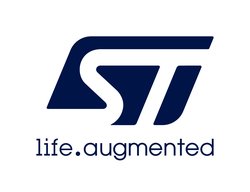NUCLEO-F413ZH
STM32 Nucleo-144 development board with STM32F413ZH MCU, supports Arduino, ST Zio and morpho connectivity
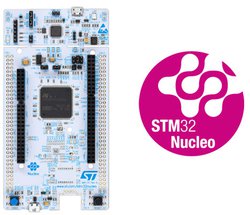
ONLY AVAILABLE ON GITHUB¶
Not with MBED online
Use mbed-cli: mbed <compile/test> -m NUCLEO_F413ZH
Overview¶
The STM32 Nucleo-144 board provides an affordable and flexible way for users to try out new concepts and build prototypes with the STM32 microcontroller, choosing from the various combinations of performance, power consumption and features. The ST Zio connector, which is an extension of Arduino™ Uno, provides access to more peripherals and ST morpho headers make it easy to expand the functionality of the Nucleo open development platform with a wide choice of specialized shields. The STM32 Nucleo-144 board does not require any separate probe, as it integrates the ST-LINK/V2-1 debugger/programmer and it comes with the STM32 comprehensive software HAL library, together with various packaged software examples, as well as a direct access to the ARM®mbed™online resources.
Microcontroller features¶
- STM32F413ZH in LQFP144 package
- ARM®32-bit Cortex®-M4 + FPU + ART Accelerator™
- Up to 100 MHz CPU frequency
- 1.5MB of Flash memory
- 320 KB of SRAM
- LCD parallel interface, 8080/6800 modes
- 1.7 V to 3.6 V application supply and I/Os
- 32 kHz oscillator for RTC with calibration
- Internal 32 kHz RC with calibration
- Low power: Sleep, Stop and Standby modes
- VBAT supply for RTC
- 1 × 12-bit, 2.4 MSPS ADC
- 2 × 12-bit D/A converters
- General-purpose DMA
- 18 x Timers
- Debug mode: SWD & JTAG interfaces
- SPDIF-Rx
- 4 × I2C interfaces (SMBus/PMBus)
- 10 USART
- 5 x SPI / I2S (2 full duplex)
- 3 × CAN (2.0B Active)
- 1 x SDIO/MMC interface
- USB 2.0 full-speed device/host/OTG controller with on-chip PHY
- CRC calculation unit
- RTC: subsecond accuracy, hardware calendar
- 96-bit unique ID
Nucleo features¶
- Two types of extension resources
- Arduino Uno Revision 3 connectivity
- STMicroelectronics Morpho extension pin headers for full access to all STM32 I/Os
- On-board ST-LINK/V2-1 debugger/programmer with SWD connector
- Selection-mode switch to use the kit as a standalone ST-LINK/V2-1
- Flexible board power supply
- USB VBUS or external source (3.3 V, 5 V, 7 - 12 V)
- Power management access point
- Three User LEDs
- Two push buttons: USER and RESET
- USB re-enumeration capability: three different interfaces supported on USB
- Virtual Com port
- Mass storage (USB Disk drive) for drag'n'drop programming
- Debug port
- USART
Board pinout¶
Pins Legend¶
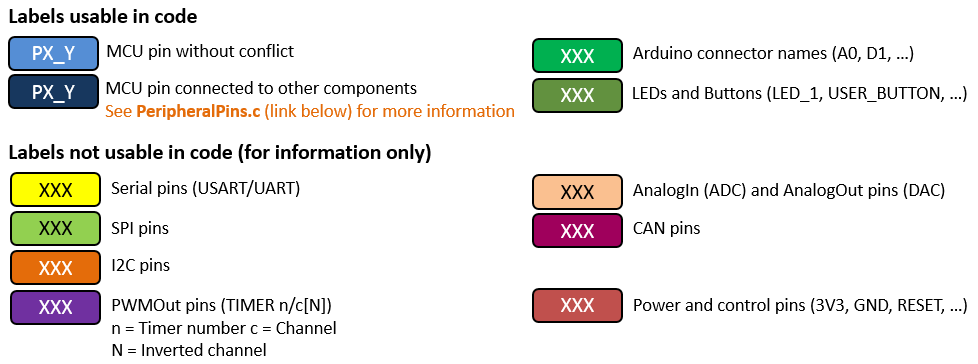
You can find more details on the available pins and labels in the PeripheralPins.c and PinNames.h files.
These files can be found in:
- ARMmbed/mbed-os repository on GitHub (up-to-date version, used with mbed CLI commands)
Zio and Arduino-compatible headers¶
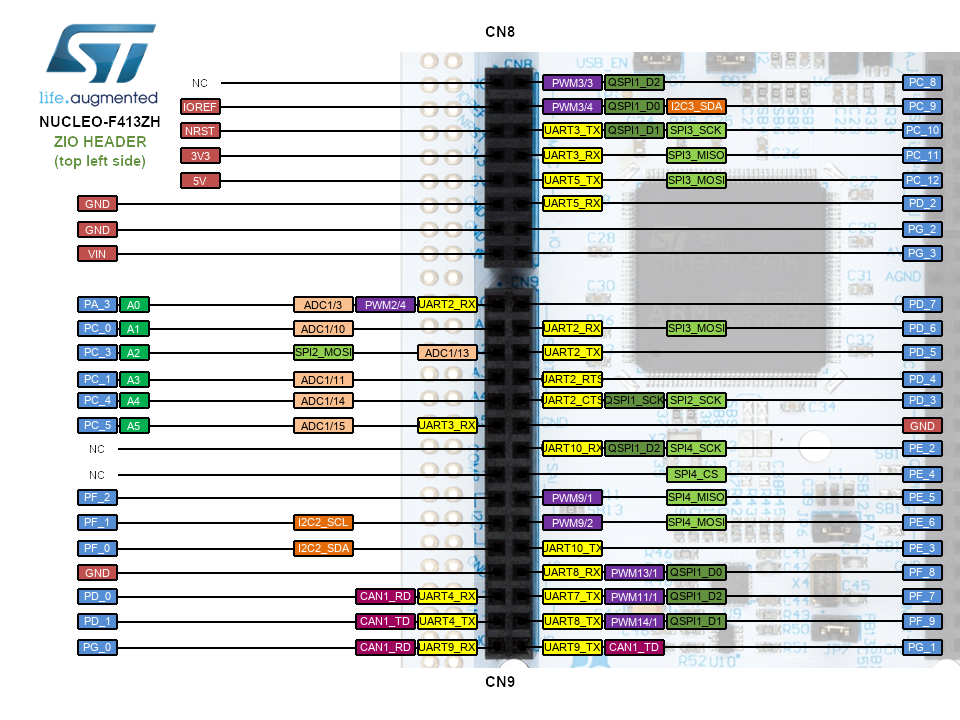
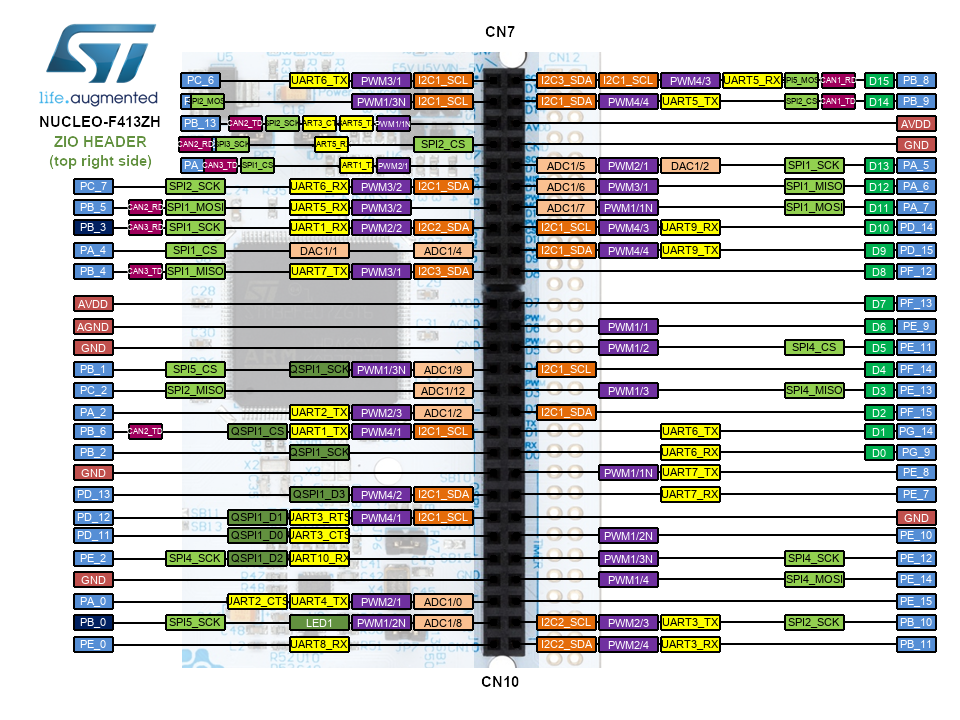
CN11 CN12 headers¶

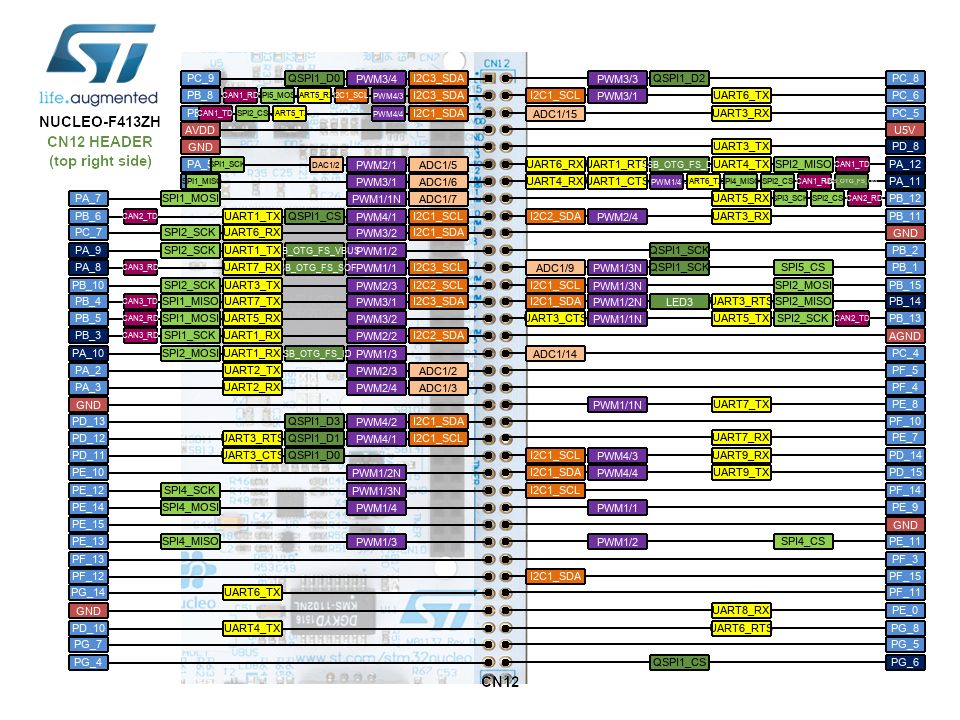
Supported shields¶
Getting started¶
This video shows how to get started with ARM mbed Integrated Development Environment using STM32 Nucleo platform:
Nucleo ST-LINK/V2 driver installation and firmware upgrade
Technical references¶
For more information, please refer to:
Known limitations¶
The following section describes known limitations of the platform. Note that general issues are tracked into the mbed repository available on GitHub.
This platform does not present any limitation.
Tips and Tricks¶
Find more information in ST WIKI pages.
You need to log in to post a discussion
